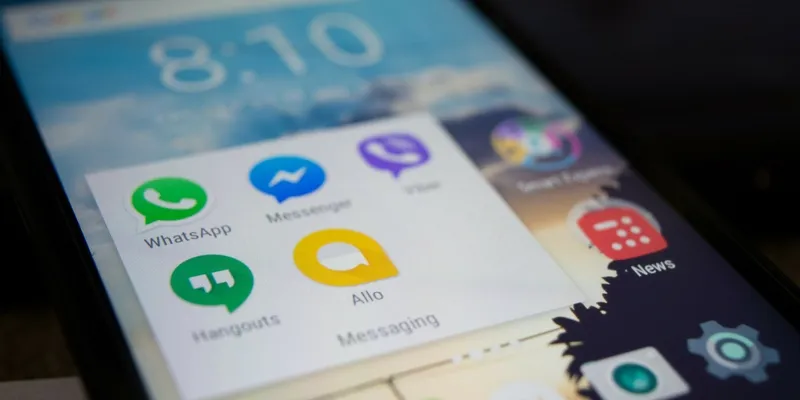Global leader WhatsApp faces tough competition in Southeast Asia
For the average urban Indian, it is highly likely that their day begins with a host of messages on WhatsApp. From “good morning” wishes on “family groups” to lame jokes from friends to the latest “news updates”, Indians send and receive a whole lot of information on WhatsApp every day, including 50 million minutes on video calls alone. Naturally, with this level of usage, there is scope for great benefit as well as harm.
While civic participation in national and state matters is possible at levels greater than ever before, so is the proliferation of fake news and divisive opinions. However, there is no point denying WhatsApp’s power and grip on communication in India.
On the surface, the messaging app seems invincible. By February 2017, WhatsApp had acquired 1.2 billion users globally, despite questions and concerns about data privacy. Despite this global success, WhatsApp faces a lot of competition in the Southeast Asia region in particular, on account of other high-profile platforms with competitive services and consumer bases.

As a region that almost completely skipped the desktop PC revolution, most citizens here got their first taste of internet-based communication through social media sites and messaging apps. Southeast Asia proves its love for messaging apps when one sees that messaging-only apps repeatedly rank among the top three social platforms in the region. The difference is that unlike India, where WhatsApp has by and large become ubiquitous, Southeast Asian countries have platforms like LINE, WeChat, Kakao Talk, Facebook Messenger, Zalo, Viber, and even Blackberry Messenger giving stiff competition to the big daddy of messaging apps.
For a region that loves and literally lives on chat apps, this is naturally a big space for brands and advertisers to invest in. From marketing to social customer service, Southeast Asians track delivery statuses, change flights, and even book cabs on messaging apps. These apps also have some of the most creative advertising campaigns and significant brand sponsorships in the region, such as WeChat sponsoring Indonesian Idol and Line’s localized emojis, stickers, and a USD 10 million advertising budget as early in the lifecycle as 2014!
What is interesting is that these full-fledged consumer platforms are overhauling business communication too. Filling in the gap left by enterprise communication platforms like Slack and Lync, messaging apps let you interact, form groups, and exchange files with external parties too, allowing collaboration beyond the glass doors of conference rooms. That means that a lot of business – between independent professionals and clients, brands and agencies – happens on messaging apps. These are interesting times for business and personal communication, and Southeast Asia is the place to watch how this story unfolds.
But who is using which messaging apps in Southeast Asia? We take a look at the apps making it big in the region.
Facebook Messenger
Southeast Asia loves Facebook. The social networking platform has close to 306 million users in the region. Naturally, when the company pulled the plug on integrated messaging within the original app and forced users to download a separate Messenger app, it met with some resistance. But that did not stop the Messenger app from soaring to the top ranks on app stores.
Today, Facebook Messenger is used widely in the region. It ranks as the favourite messaging app in the Philippines, with an astounding 94 percent of IM users choosing Facebook Messenger over other platforms. In Cambodia too, Facebook Messenger leads the charge with 20 percent reach. It remains one of Malaysia’s most popular apps, with a consistent top three ranking on the Apple App Store as well as the Google Play Store. In Thailand, Facebook Messenger is the second most widely used messaging app, which is hardly a surprise since Bangkok – home to 8.2 million residents, less than half of New Delhi – has the world’s highest number of Facebook users!
Blackberry Messenger
Calling Blackberry Messenger (BBM) iconic is hardly an overstatement. Even as Blackberry parent Research In Motion (RIM) started to lose traction in the smartphone battle in the mid-2000s, BBM was establishing itself as the first extremely successful smartphone app around the globe. The app’s popularity peaked in 2011, with 60 million users.
However, eventually, it could not keep up with WhatsApp, with BBM’s most recent global user volumes being one-tenth that of WhatsApp. But it has stayed Indonesia’s favourite messaging app, with over 90 percent of the country’s 72.5 million IM users still active on BBM. Late last year, the company partnered with Bukalapak, a homegrown online marketplace, to power digital transactions. It also allows features like bill payment, in-app coupons, and brand communication opportunities.
LINE
Launched in 2011 in Japan, LINE was originally meant to be an employee communication tool for NHN employees. But it quickly went on to become an instant messaging phenomenon in Asia. As of last year, it had close to 220 million daily active users around the world and stood at the second place among IM apps in Asia in terms of popularity.
In the Southeast Asia region too, LINE has remained popular thanks to its stickers and an on-point advertising and brand communication strategy. It is the most popular messaging app in Thailand, with far more active users – over 10 million – than WhatsApp and other integrated and OTT apps. It also ranks among the top three messaging apps in Indonesia and Cambodia.
Viber
Founded in Tel Aviv by Israel Defence Force’s Chief Information Officers Talmon Marco and Igor Magazinnik in 2010, Viber started generating revenue only around 2013 via user payments on its P2P calling feature ‘Viber Out’ and its sticker store. The app truly came into its own when Rakuten acquired it for $900 million in 2014. Since then, it has gone on to become the top ranking messaging app in Myanmar, with over 12 million users. Its bandwidth-optimized UI has been its biggest USP in a country still grappling with internet reach and speed. It also ranks among the top messaging apps in Vietnam and the Philippines.
Zalo
With an astounding 80 percent reach, Vietnam’s homegrown Zalo has consistently ranked as the country’s favourite messaging app. What contributes most significantly to Zalo’s popularity is the deep cultural and linguistic context that reflects in the messaging app’s stickers. The popularity could also come from the fact that the app works on 2G, 2.5G, 3G, 4G, and WiFi, effectively tackling Vietnam’s problems with patchy internet speeds and connectivity.
A Chinese IM, commerce, and payment services app, WeChat comes from the Tencent stable. Founded in 2011, by 2017 WeChat had become a global phenomenon with one of the largest numbers of monthly active users. 90 percent of WeChat’s user base comes from the world’s Chinese population. But the app accounts for 38 percent of smartphone usage in Malaysia as well. Beyond messaging, WeChat also offers facilities for utilities such as doctor’s appointments bookings, food delivery, and payments and fund transfer.
WhatsApp is leading the charge in Singapore for the most part; there are also a few other Southeast Asian countries with their own preferred apps (albeit local ones) like South Korea’s Kakao Talk and Russia’s Telegram. Hence, there is no clear market leader in the region so far. But opportunities abound as broadband speeds and reach continue to pick up with improvements in infrastructure.
Will WhatsApp offer new features to break through the clutter and leverage the fragmented market, or is the region likely to see a homegrown equivalent of WhatsApp emerge as the market leader? For now, let’s wait and watch.







